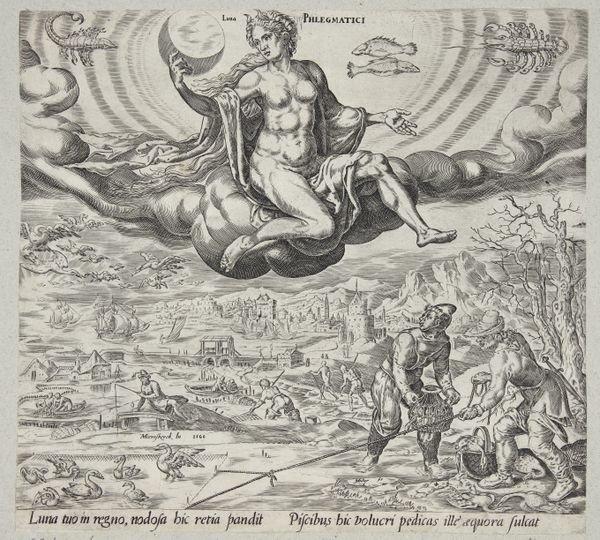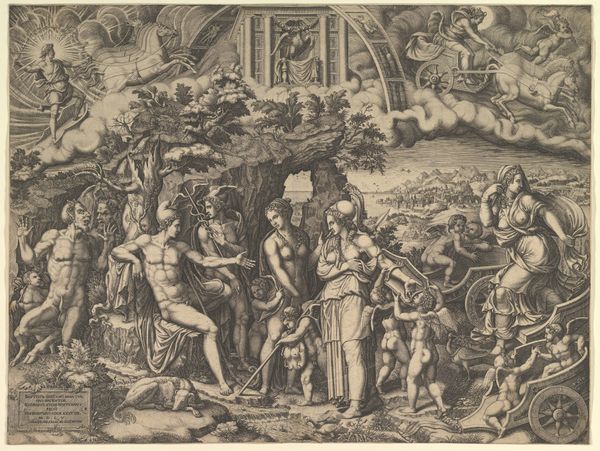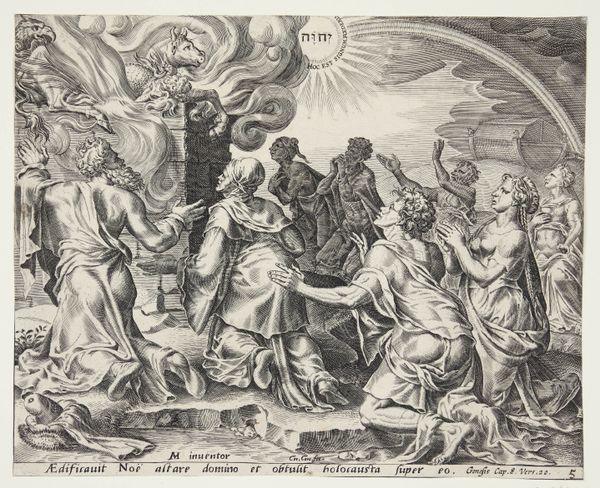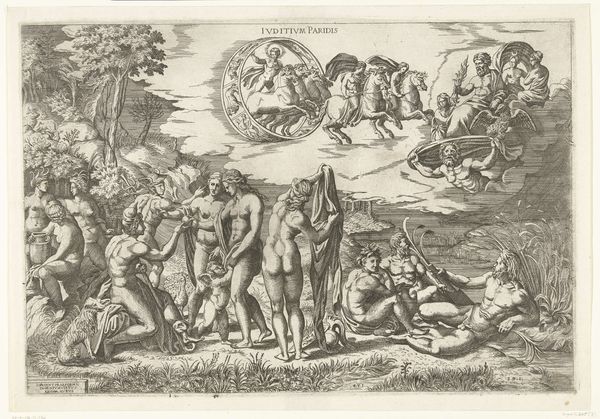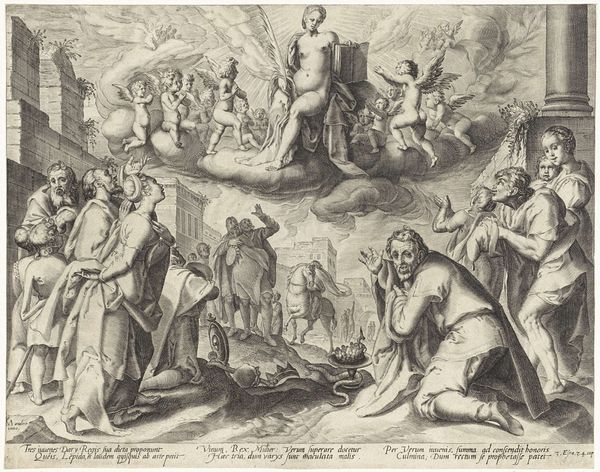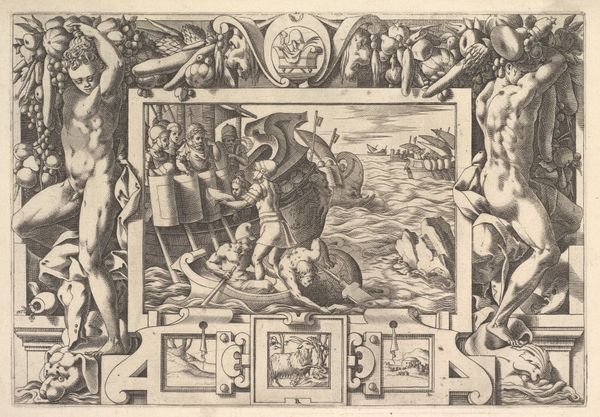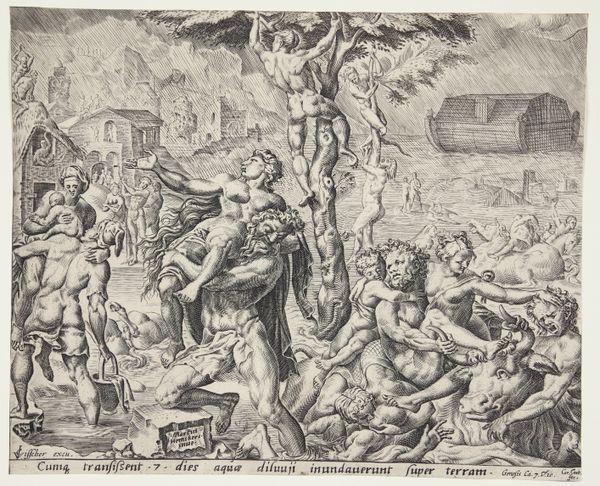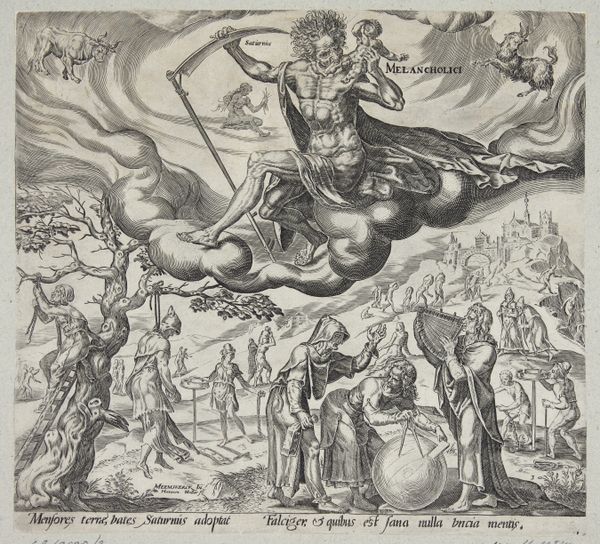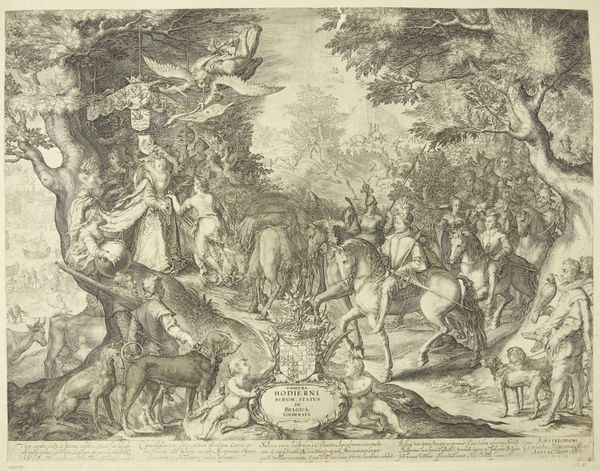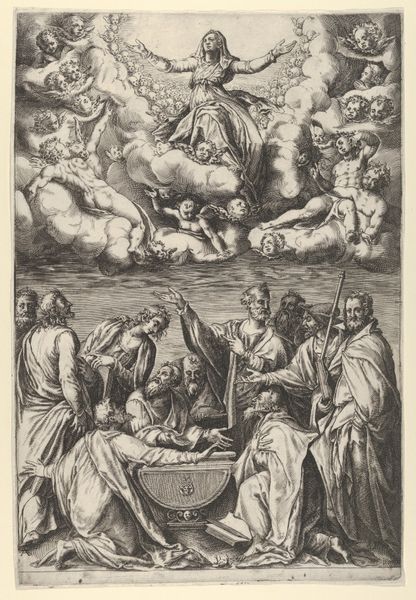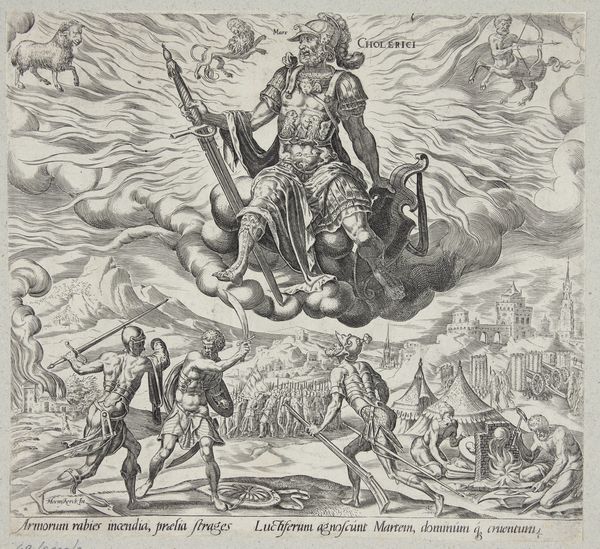
print, engraving
#
allegory
# print
#
mannerism
#
figuration
#
line
#
history-painting
#
engraving
Dimensions: 215 mm (height) x 235 mm (width) (monteringsmaal), 215 mm (height) x 232 mm (width) (bladmaal)
Curator: Welcome. We’re standing before “The Sanguine Temperament,” a 1566 engraving by Harmen Jansz. Muller. It’s currently housed here at the SMK, the National Gallery of Denmark. Editor: It's striking, a flurry of lines constructing a scene that feels both classical and chaotic. There's an overwhelming sense of joviality mixed with lust, almost as if a Renaissance festival spontaneously broke out within an Olympian pantheon. Curator: Indeed. Formally, it exhibits the stylistic traits of Mannerism—elongated figures, dynamic compositions, and a sophisticated use of line. Notice the clear division between the heavenly realm above, occupied by Jupiter and Venus, and the earthly activities depicted below. The upper area uses finer, more controlled lines to represent harmony, in contrast with the energetic density of lines in the lower portion. Editor: Absolutely. It's vital to view this image in its sociohistorical context, beyond the pure formalism. "Sanguine" refers to one of the four temperaments in humoral theory. This engraving isn’t merely about aesthetics; it’s embedded in systems of thought about the body, emotions, and social behaviors that heavily influenced early modern understanding of humanity. The pleasure-seeking behaviours, like dancing and music-making, represent that humorist idea. It can also speak to larger narratives, to patriarchy and control through representations of gender and class. The bodies here are overwhelmingly white, healthy and youthful and, ultimately, reinforce existing European norms of beauty and the power relations inherent. Curator: Undoubtedly. Yet, observing Jupiter with scales implies more than a mere embodiment of joy. The scales symbolize balance—or the potential for imbalance. The engraving plays on these contrasts between order and chaos, control and passion which would indicate that though this engraving highlights pleasure it simultaneously recognises its potential hazards and how it should, perhaps, be regulated and enjoyed by a select elite. Editor: Those scales do make one wonder how these images reinforce early modern systems of class through controlling desires. I guess it also opens to questions regarding how visual culture contributes to managing the behavior of its audience! I find the interplay of control and expression pretty interesting in considering that question. Curator: Agreed. The complexity makes it more fascinating! Editor: It certainly gives us a lot to think about and discuss.
Comments
No comments
Be the first to comment and join the conversation on the ultimate creative platform.
